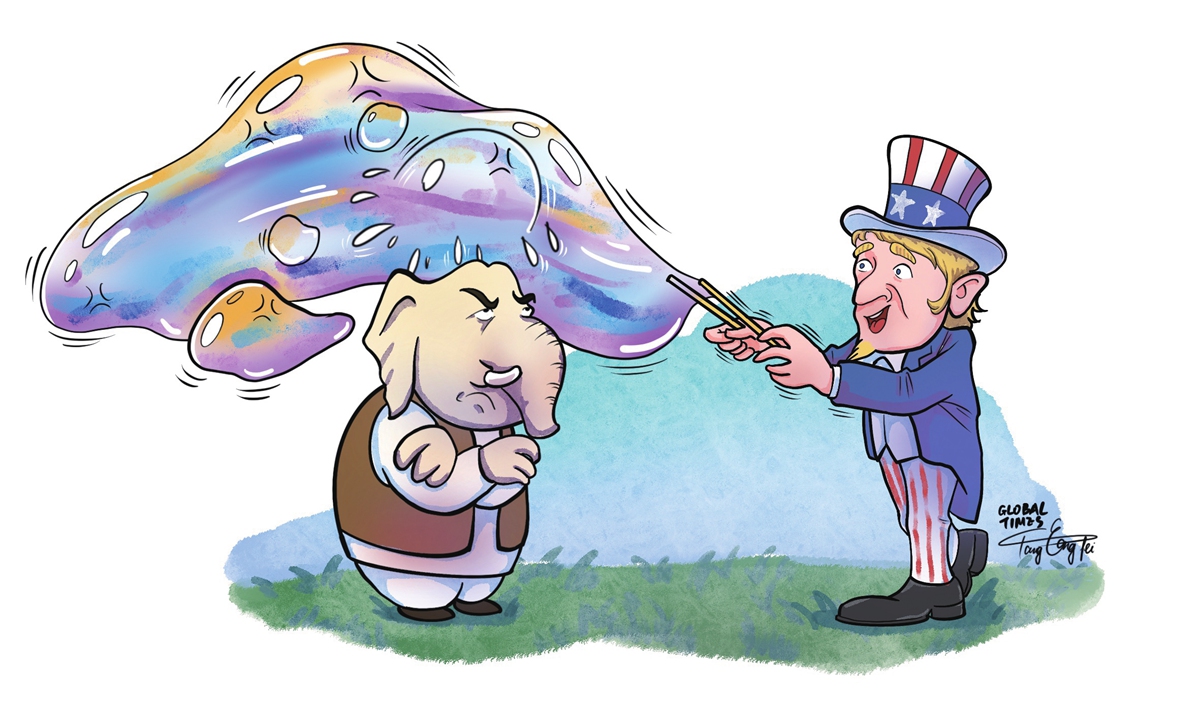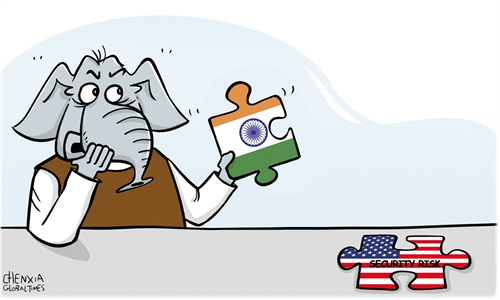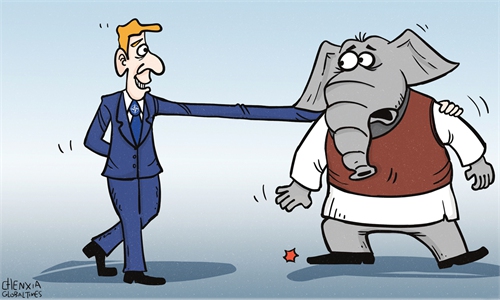
Illustration: Tang Tengfei/Global Times
The US and India on Tuesday officially elevated strategic partnership with the initiative on Critical and Emerging Technology (iCET), expanding their cooperation in fields like artificial intelligence and military equipment, the White House said after the US National Security Advisor Jake Sullivan met his Indian counterpart Ajit Doval.
There is a Chinese adage "same bed, different dreams," which describes a relationship of a couple whose lives are intimately intertwined, but have different intents. This seems to be the perfect description of the ties between Washington and New Delhi. The official announcement of the iCET follows an agreement between US President Joe Biden and Indian Prime Minister Narendra Modi to create the initiative when they met in Tokyo in May 2022, demonstrating it is needed by both sides.
For one, India is willing to ramp up its cooperation with the US in technology, hoping to introduce the advanced technology and attract funding from the US, in a bid to achieve its own accelerated development, thereby replacing China's position in the global industrial and supply chains.
As for Washington, to rope in India, on the one hand it has to cater to what the country wants, on the other hand it can promote an agenda that puts India as part of "friend-shoring," and then India can become a supply-chain alternative to China, Liu Zongyi, secretary-general of the Research Center for China-South Asia Cooperation at the Shanghai Institutes for International Studies, told the Global Times.
In terms of their closer cooperation in defense as the initiative said, Liu noted that both Washington and New Delhi intend to see India get rid of its reliance on Russia for arms. Now, around 70 percent of the equipment of the India Air Force is of Russian origin, and New Delhi is pursuing to diversify its weaponry and equipment and enhance its own manufacturing capabilities in this regard.
While for Washington, given New Delhi's manner toward Russia amid the Ukraine crisis, it is also eager to see India's dependence on Moscow for arms wane, so that it can tie New Delhi on its anti-Russia chariot.
It remains highly questionable how much benefit or technology the US is willing to share with India notably in fields such as high-tech and defense, as Washington is worried that India will develop into another threat by virtue of rapid development after China. Furthermore, many people in the Indian strategic circle still believe that the US is not trustworthy, which will also heavily reduce the effect of their cooperation.
While India continues to move closer to the US, it will not completely stand on the opposite side of China with the US. China is a neighbor that India cannot move away from. In August, S. Jaishankar, India's minister of external affairs, underlined the term "Asian Century" and stressed the need for India and China to come together.
Unlike Washington's little brothers such as Japan, India is a country that pursues non-alignment and strategic autonomy. It is an illusion that India can completely follow the geostrategic path of the US toward China and Russia. As a result, Washington's attempt to exploit New Delhi to contain Beijing and Russia is heavily dwarfed.
A Financial Times article said, citing one US official, that the technology initiative, coupled with other actions, meant that 2023 would "probably be the most consequential year in US-India diplomacy," adding that India was "the key" to US ambitions in the region.
This expresses the US' urgent desire to improve its relations with India. Some observers say that the US' current intensified actions to woo India indicate the country is stepping up its geopolitical competition with China and Russia but still lacks an efficient approach.



